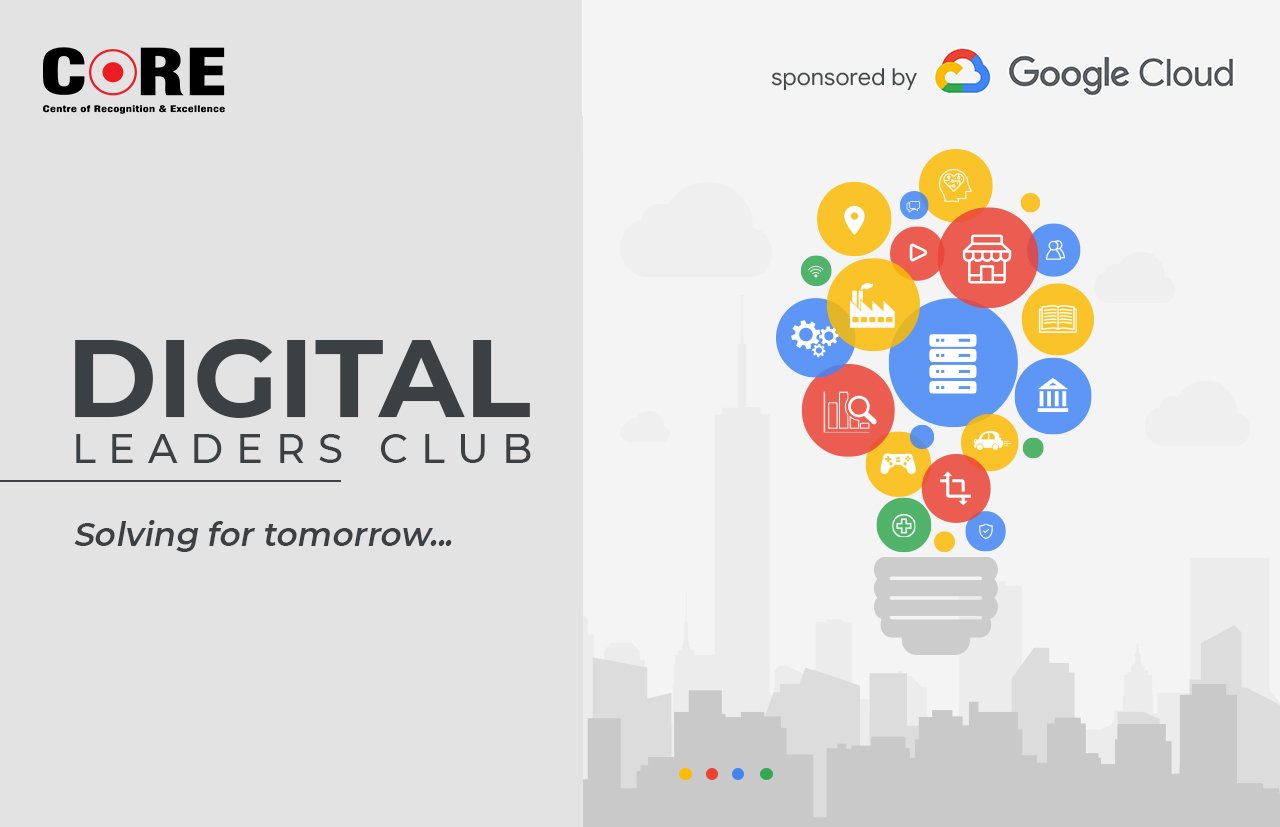- Cloud and automation emerge as key priorties of CIOs as they chalk out the future IT roadmap
- Mission-critcal workloads are being migrated to cloud to leverage the true potential of data and AI/ML models
Today, we are living in a digital-only world. As customers increasingly prefer digital interactions, engagement and transactions with brands, enterprises are responding proactively to create compelling digital experiences. In the process, they are actively leveraging new-age technologies – be it such AI/ML, IoT, AR/VR, Predictive Analytics and so on. Staying agile and innovating faster are now every organization’s top priority.
The latest edition of “Digital Leaders Club” –curated by CORE Media and Google Cloud India, discussed how enterprises are riding this technology wave by adopting a cloud-first strategy.
“Cloud has become a very important element for enterprises across verticals. CIOs have been busy chalking out Cloud strategies and building robust IT road maps for their organization in the last 18 months With the data explosion and the disruption that’s happening, there’s a lot of opportunities in terms of optimising the existing solutions and adopting new ones,” said Anoop Mathur, Founder & President, CORE Media, who moderated the discussion featuring senior technology leaders and experts from Google.
Rajesh Ramdas, Head of Customer Engineering, Corporate Accounts at Google, said, “At Google, we have made available, the work done over the years, to our customers. Our focus is to first get the technology to them and next make it easier. The other important factor we always look into with any of the solutions is security. And the best practices around security have been pre-built in many of the solutions that we bring in. Finally, we work towards providing the same at a cost that can be consumed by the customer.”
A CIO from the logistics space, who has an early mover advantage of adopting cloud, informed that they have been on the cloud journey for six years now. “The only way we have been able to sustain is because we adopted cloud much earlier when the industry was just thinking about it. We are not hybrid, but we are 100 per cent on the cloud. With the kind of scalability and the resiliency we get, there’s so much we have been doing on the latest technologies in delivering better customer experience,” he said.
According to a CIO from a cement major, Cloud adaptation in their organisation has been growing steadily “We hardly have any critical systems on-prem. While our core ERP system is on private cloud,
there are other public cloud services as well such as CRM, resourcing, email services, etc. The real focus is on adopting the technology and transforming the business. Our next priority is to reduce human intervention in various processes and we are leveraging analytics, AI and cloud to make this possible,” he informed.
A CIO from a fintech company shared, “We have had some advantage of not having too much of a legacy. We have moved to the relatively modern architecture of microservices, predominantly in a virtualised environment. We are now comfortable with the architectural pattern, and we are seeing benefits in terms of our ability to respond faster to changes and ease of scaling.”
Bringing the discussion to a close, Amit Kumar, Director Sales, Google Cloud said, “It is interesting to know that the businesses are coming up with different themes of innovation and are trying to do more with technology and digital tools. Going by their experience in migrating to Cloud, they have proved that Cloud can do a lot.”


